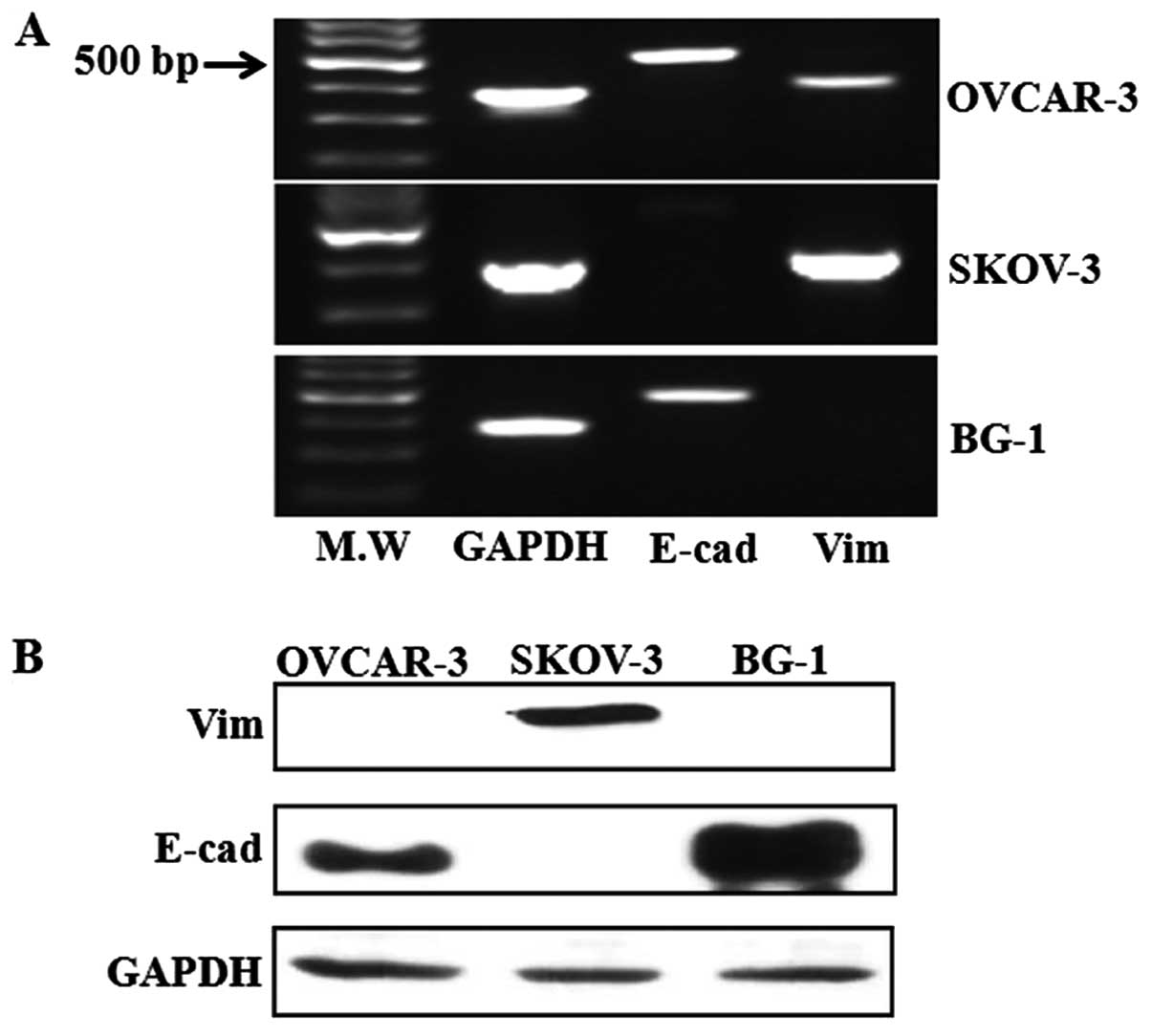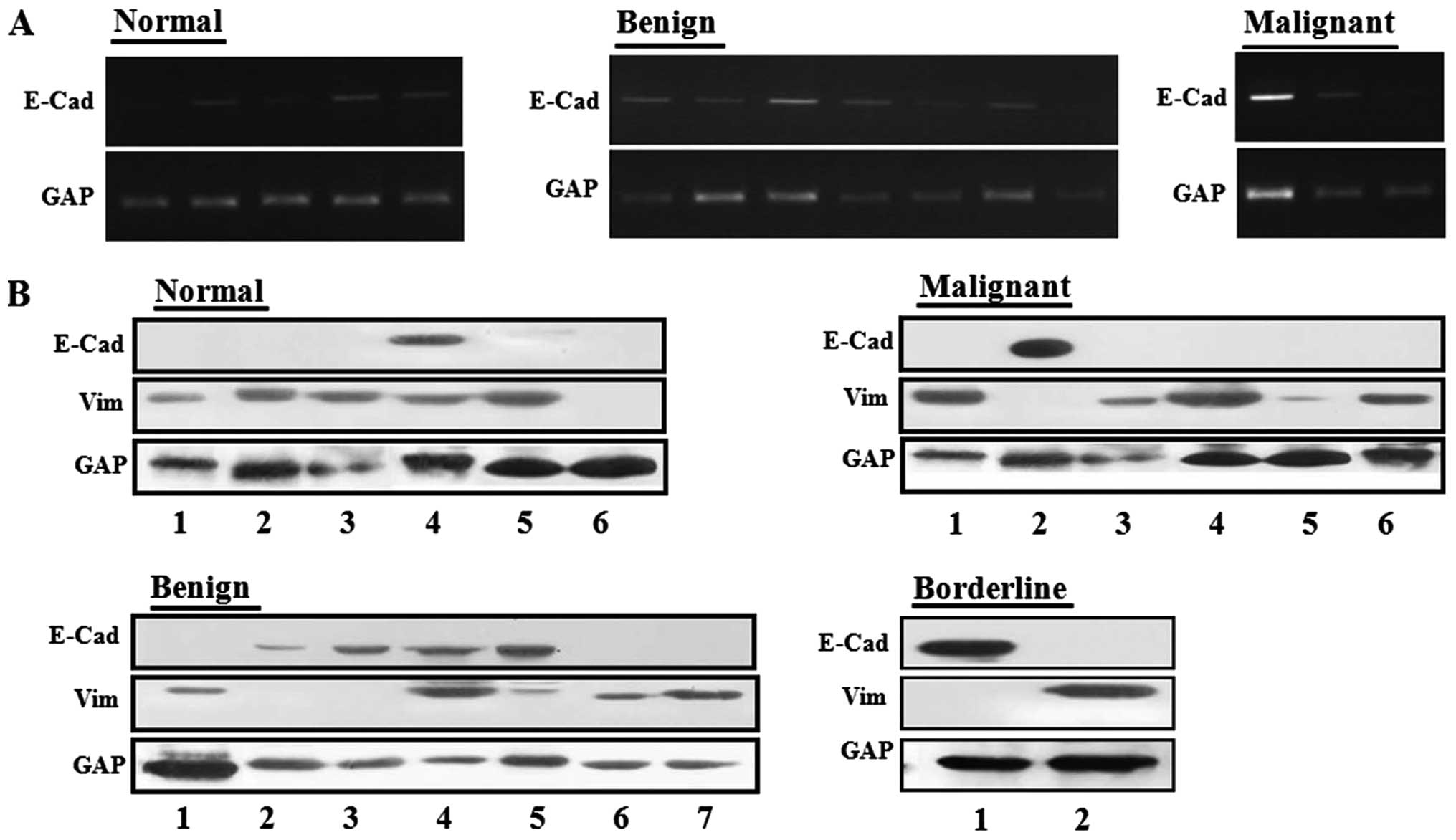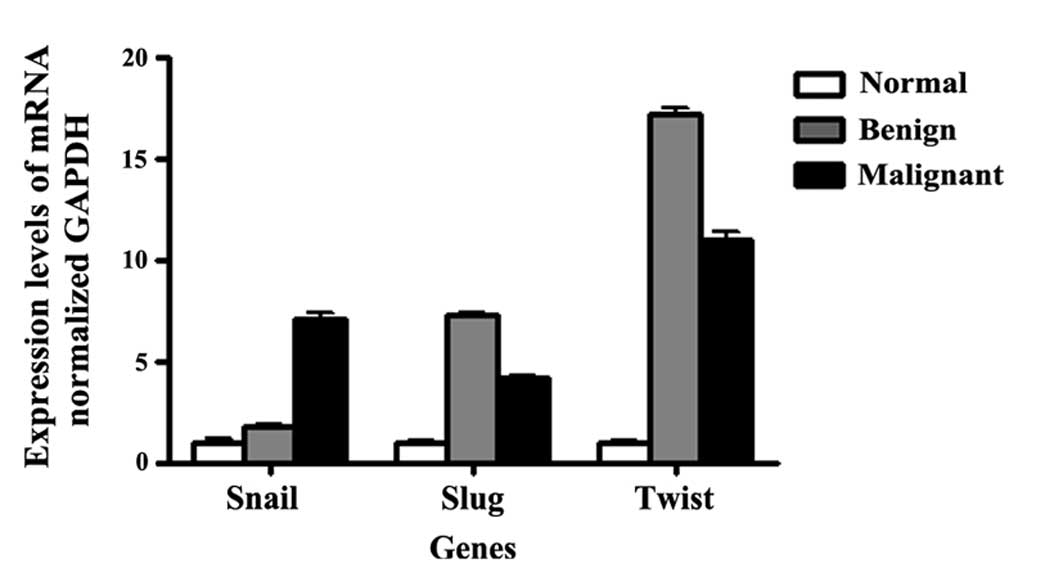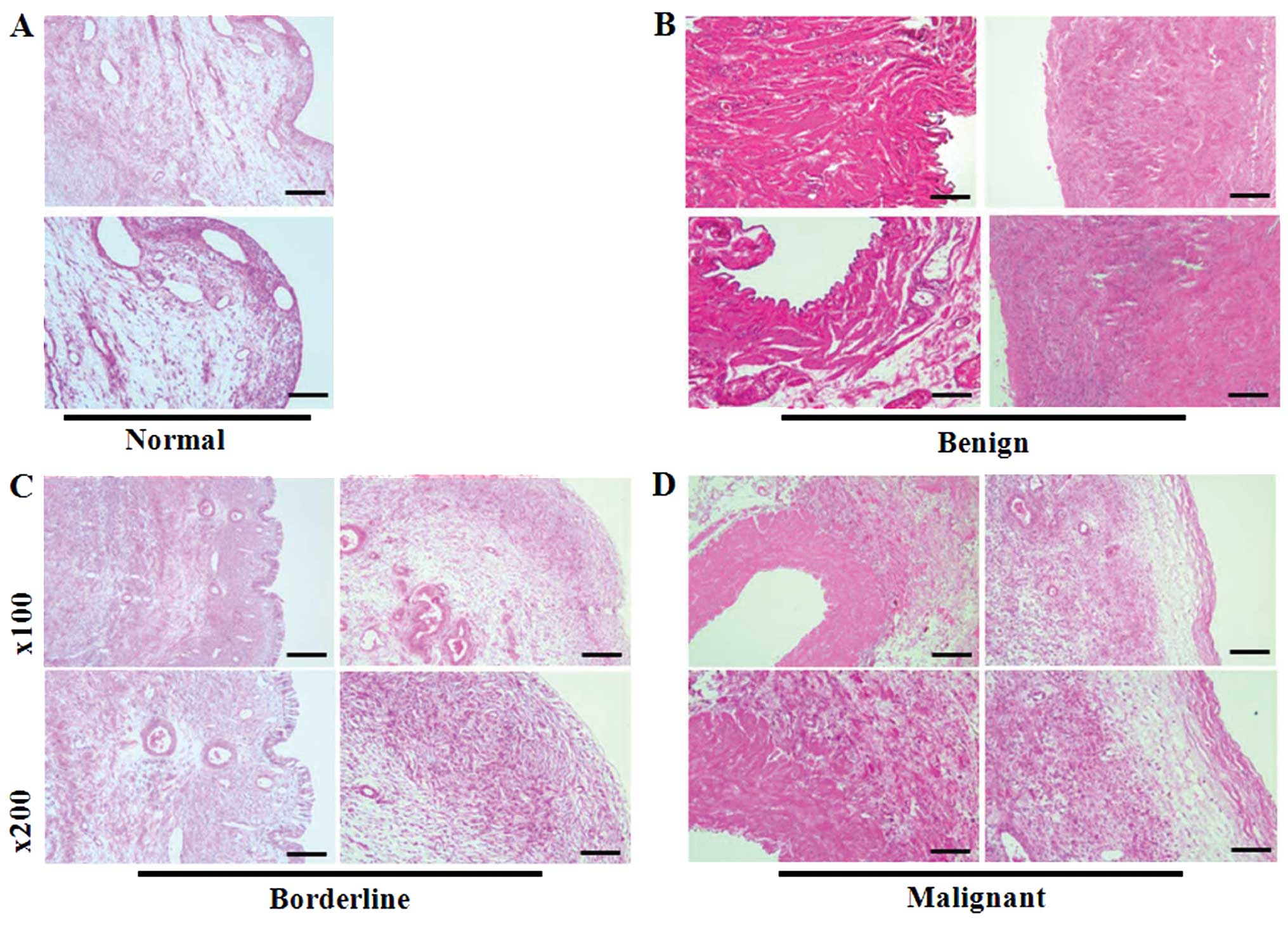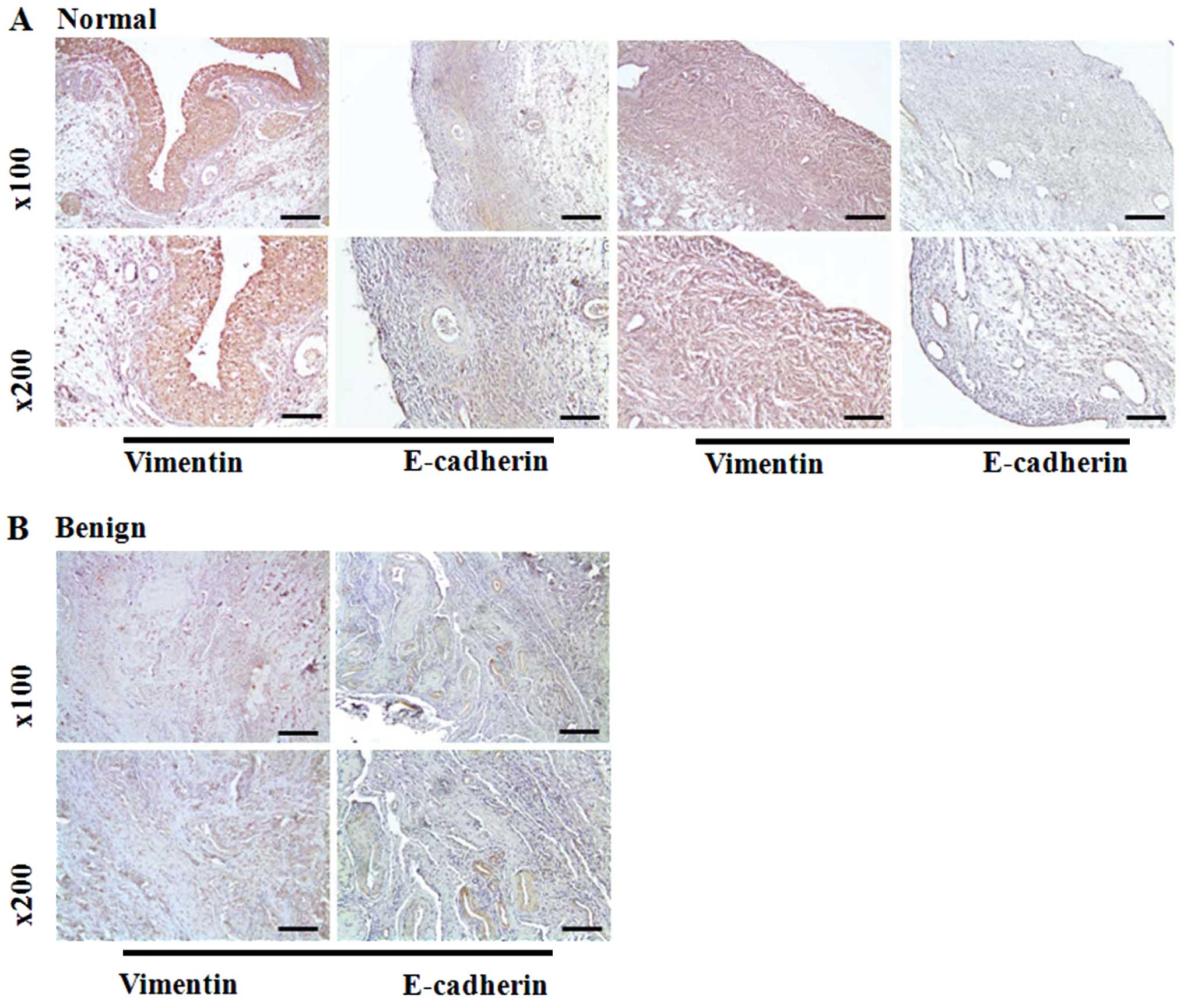|
1
|
Lee JM, Dedhar S, Kalluri R and Thompson
EW: The epithelial-mesenchymal transition: new insights in
signaling, development, and disease. J Cell Biol. 172:973–981.
2006. View Article : Google Scholar : PubMed/NCBI
|
|
2
|
Hay ED: The mesenchymal cell, its role in
the embryo, and the remarkable signaling mechanisms that create it.
Dev Dyn. 233:706–720. 2005. View Article : Google Scholar : PubMed/NCBI
|
|
3
|
Larue L and Bellacosa A:
Epithelial-mesenchymal transition in development and cancer: role
of phosphatidylinositol 3′ kinase/AKT pathways. Oncogene.
24:7443–7454. 2005. View Article : Google Scholar
|
|
4
|
Thiery JP: Epithelial-mesenchymal
transitions in tumour progression. Nat Rev Cancer. 2:442–454. 2002.
View Article : Google Scholar : PubMed/NCBI
|
|
5
|
Thiery JP and Sleeman JP: Complex networks
orchestrate epithelial-mesenchymal transitions. Nat Rev Mol Cell
Biol. 7:131–142. 2006. View
Article : Google Scholar : PubMed/NCBI
|
|
6
|
Vares G, Cui X, Wang B, Nakajima T and
Nenoi M: Generation of breast cancer stem cells by steroid hormones
in irradiated human mammary cell lines. PLoS One. 8:e771242008.
View Article : Google Scholar : PubMed/NCBI
|
|
7
|
Thiery JP: Epithelial-mesenchymal
transitions in development and pathologies. Curr Opin Cell Biol.
15:740–746. 2003. View Article : Google Scholar : PubMed/NCBI
|
|
8
|
Aktas B, Tewes M, Fehm T, Hauch S, Kimmig
R and Kasimir-Bauer S: Stem cell and epithelial-mesenchymal
transition markers are frequently overexpressed in circulating
tumor cells of metastatic breast cancer patients. Breast Cancer
Res. 11:R462009. View
Article : Google Scholar
|
|
9
|
Kurrey NK, Jalgaonkar SP, Joglekar AV, et
al: Snail and slug mediate radioresistance and chemoresistance by
antagonizing p53-mediated apoptosis and acquiring a stem-like
phenotype in ovarian cancer cells. Stem Cells. 27:2059–2068. 2009.
View Article : Google Scholar : PubMed/NCBI
|
|
10
|
Turley EA, Veiseh M, Radisky DC and
Bissell MJ: Mechanisms of disease: epithelial-mesenchymal
transition - does cellular plasticity fuel neoplastic progression?
Nat Clin Pract Oncol. 5:280–290. 2008. View Article : Google Scholar : PubMed/NCBI
|
|
11
|
Sarrio D, Rodriguez-Pinilla SM, Hardisson
D, Cano A, Moreno-Bueno G and Palacios J: Epithelial-mesenchymal
transition in breast cancer relates to the basal-like phenotype.
Cancer Res. 68:989–997. 2008. View Article : Google Scholar : PubMed/NCBI
|
|
12
|
Hemavathy K, Ashraf SI and Ip YT:
Snail/slug family of repressors: slowly going into the fast lane of
development and cancer. Gene. 257:1–12. 2000. View Article : Google Scholar : PubMed/NCBI
|
|
13
|
Ohkubo T and Ozawa M: The transcription
factor Snail downregulates the tight junction components
independently of E-cadherin downregulation. J Cell Sci.
117:1675–1685. 2004. View Article : Google Scholar : PubMed/NCBI
|
|
14
|
Savagner P, Kusewitt DF, Carver EA, et al:
Developmental transcription factor slug is required for effective
re-epithelialization by adult keratinocytes. J Cell Physiol.
202:858–866. 2005. View Article : Google Scholar : PubMed/NCBI
|
|
15
|
Nakayama K, Nakayama N, Katagiri H and
Miyazaki K: Mechanisms of ovarian cancer metastasis: biochemical
pathways. Int J Mol Sci. 13:11705–11717. 2012. View Article : Google Scholar : PubMed/NCBI
|
|
16
|
Batlle E, Sancho E, Franci C, et al: The
transcription factor snail is a repressor of E-cadherin gene
expression in epithelial tumour cells. Nat Cell Biol. 2:84–89.
2000. View
Article : Google Scholar : PubMed/NCBI
|
|
17
|
Grille SJ, Bellacosa A, Upson J, et al:
The protein kinase Akt induces epithelial mesenchymal transition
and promotes enhanced motility and invasiveness of squamous cell
carcinoma lines. Cancer Res. 63:2172–2178. 2003.PubMed/NCBI
|
|
18
|
Auersperg N, Wong AS, Choi KC, Kang SK and
Leung PC: Ovarian surface epithelium: biology, endocrinology, and
pathology. Endocr Rev. 22:255–288. 2001.PubMed/NCBI
|
|
19
|
Hipp S, Berg D, Ergin B, et al:
Interaction of Snail and p38 mitogen-activated protein kinase
results in shorter overall survival of ovarian cancer patients.
Virchows Arch. 457:705–713. 2010. View Article : Google Scholar : PubMed/NCBI
|
|
20
|
Okamoto S, Okamoto A, Nikaido T, et al:
Mesenchymal to epithelial transition in the human ovarian surface
epithelium focusing on inclusion cysts. Oncol Rep. 21:1209–1214.
2009. View Article : Google Scholar : PubMed/NCBI
|
|
21
|
Wong AS and Auersperg N: Normal ovarian
surface epithelium. Cancer Treat Res. 107:161–183. 2002.PubMed/NCBI
|
|
22
|
Strauss R, Li ZY, Liu Y, et al: Analysis
of epithelial and mesenchymal markers in ovarian cancer reveals
phenotypic heterogeneity and plasticity. PLoS One. 6:e161862011.
View Article : Google Scholar : PubMed/NCBI
|
|
23
|
Cho EY, Choi Y, Chae SW, Sohn JH and Ahn
GH: Immunohistochemical study of the expression of adhesion
molecules in ovarian serous neoplasms. Pathol Int. 56:62–70. 2006.
View Article : Google Scholar : PubMed/NCBI
|
|
24
|
Ahmed N, Maines-Bandiera S, Quinn MA,
Unger WG, Dedhar S and Auersperg N: Molecular pathways regulating
EGF-induced epithelio-mesenchymal transition in human ovarian
surface epithelium. Am J Physiol Cell Physiol. 290:C1532–C1542.
2006. View Article : Google Scholar : PubMed/NCBI
|
|
25
|
Ahmed N, Thompson EW and Quinn MA:
Epithelial-mesenchymal interconversions in normal ovarian surface
epithelium and ovarian carcinomas: an exception to the norm. J Cell
Physiol. 213:581–588. 2007. View Article : Google Scholar : PubMed/NCBI
|
|
26
|
Demir AY, Groothuis PG, Nap AW, et al:
Menstrual effluent induces epithelial-mesenchymal transitions in
mesothelial cells. Hum Reprod. 19:21–29. 2004. View Article : Google Scholar : PubMed/NCBI
|
|
27
|
Symowicz J, Adley BP, Gleason KJ, et al:
Engagement of collagen-binding integrins promotes matrix
metalloproteinase-9-dependent E-cadherin ectodomain shedding in
ovarian carcinoma cells. Cancer Res. 67:2030–2039. 2007. View Article : Google Scholar
|
|
28
|
Imai T, Horiuchi A, Shiozawa T, et al:
Elevated expression of E-cadherin and alpha-, beta-, and
gamma-catenins in metastatic lesions compared with primary
epithelial ovarian carcinomas. Hum Pathol. 35:1469–1476. 2004.
View Article : Google Scholar : PubMed/NCBI
|
|
29
|
Sundfeldt K, Ivarsson K, Rask K, Haeger M,
Hedin L and Brannstrom M: Higher levels of soluble E-cadherin in
cyst fluid from malignant ovarian tumours than in benign cysts.
Anticancer Res. 21:65–70. 2001.PubMed/NCBI
|
|
30
|
Vergara D, Merlot B, Lucot JP, et al:
Epithelial-mesenchymal transition in ovarian cancer. Cancer Lett.
291:59–66. 2010. View Article : Google Scholar : PubMed/NCBI
|
|
31
|
Liu J, Ikeguchi M, Nakamura S and Kaibara
N: Re-expression of the cadherin-catenin complex in lymph nodes
with metastasis in advanced gastric cancer: the relationship with
patient survival. J Exp Clin Cancer Res. 21:65–71. 2002.PubMed/NCBI
|
|
32
|
Lengyel E: Ovarian cancer development and
metastasis. Am J Pathol. 177:1053–1064. 2010. View Article : Google Scholar : PubMed/NCBI
|
|
33
|
Elloul S, Elstrand MB, Nesland JM, et al:
Snail, Slug, and Smad-interacting protein 1 as novel parameters of
disease aggressiveness in metastatic ovarian and breast carcinoma.
Cancer. 103:1631–1643. 2005. View Article : Google Scholar : PubMed/NCBI
|
|
34
|
Patel IS, Madan P, Getsios S, Bertrand MA
and MacCalman CD: Cadherin switching in ovarian cancer progression.
Int J Cancer. 106:172–177. 2003. View Article : Google Scholar : PubMed/NCBI
|
|
35
|
Cano A, Perez-Moreno MA, Rodrigo I, et al:
The transcription factor snail controls epithelial-mesenchymal
transitions by repressing E-cadherin expression. Nat Cell Biol.
2:76–83. 2000. View
Article : Google Scholar : PubMed/NCBI
|
|
36
|
Yin T, Wang C, Liu T, Zhao G, Zha Y and
Yang M: Expression of snail in pancreatic cancer promotes
metastasis and chemoresistance. J Surg Res. 141:196–203. 2007.
View Article : Google Scholar : PubMed/NCBI
|
|
37
|
Miow QH, Tan TZ, Ye J, et al:
Epithelial-mesenchymal status renders differential responses to
cisplatin in ovarian cancer. Oncogene. May 26–2014.(Epub ahead of
print). View Article : Google Scholar
|
|
38
|
Haslehurst AM, Koti M, Dharsee M, et al:
EMT transcription factors snail and slug directly contribute to
cisplatin resistance in ovarian cancer. BMC Cancer. 12:912012.
View Article : Google Scholar : PubMed/NCBI
|
|
39
|
Lo HW, Hsu SC, Xia W, et al: Epidermal
growth factor receptor cooperates with signal transducer and
activator of transcription 3 to induce epithelial-mesenchymal
transition in cancer cells via up-regulation of TWIST gene
expression. Cancer Res. 67:9066–9076. 2007. View Article : Google Scholar
|



